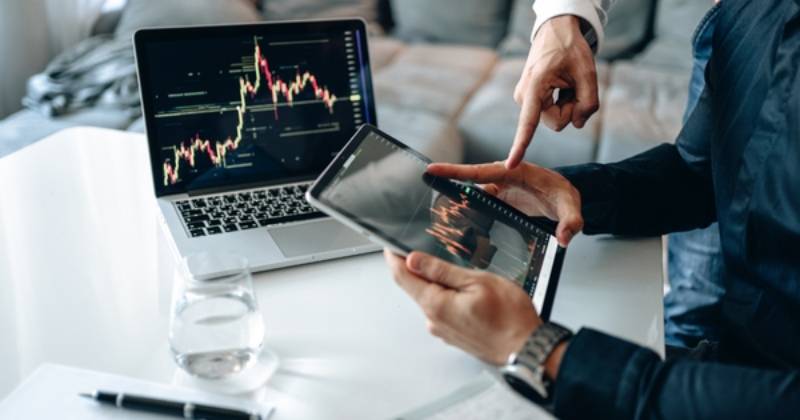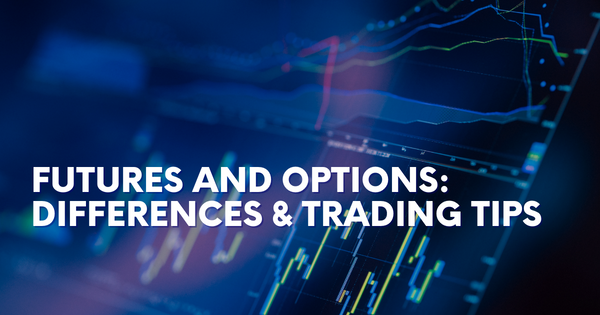When reading this article, you might be confused about futures and options. It is time to discard your confusion by punchy explanations. This blog covers crucial aspects to differentiate these two instruments. Also, you will learn the trading tips on how to trade in futures and options so that you can confidently and profitably trade them.
Overview of F&O Trading
Futures and options are two popular instruments. Yet, you should not follow such top “trending” things just because many people have traded them before. It is always crucial to equip yourself with the fundamentals for a solid foundation.
What Are Futures?
Futures are derivative financial contracts obligating parties to purchase or sale of an asset at a pre-set future date and price. It means that you must buy or sell the underlying asset at the predetermined price and expiration date regardless of current market trends.
Underlying assets in futures contracts can be physical commodities and financial instruments. The information about the quantity of the asset is in futures contracts so that the trading on a futures exchange becomes smoother. Like options, futures can be a hedging tool or for trade speculation.
What Are Options?
Options are derivative contracts offering the buyers the rights to buy or sell the underlying, rather than the obligation.
The options contract also includes the predetermined prices and expiration dates. Yet, the buyers do not have to process the same terms in the contracts. Options investors decide whether they buy, sell, or hold their trades, based on the current market conditions.
Many investors love to use options to back up their investments, especially when the market moves in unfavorable directions. In other words, options can help traders and investors downsize risks and upsize profits thanks to their hedging and leveraging features.
Understanding F&O Meaning in More Detail
Types of Futures
We divide futures contracts into two categories based on the core features, whether it relates to finance or physical products.
- Financial futures include stock futures, currency futures, index futures, interest rate futures, etc.
- Physical futures refer to commodity, energy, metal futures, etc.
Types of Options
- A call option enables the holder the right to buy the underlying asset at the preset price and date. The value of a call option will increase as the security’s price rises.
- A put option allows the holder the right to sell the underlying at the date and price that buyers and sellers agreed on before.
Common Terms That You Should Know to Trade F&O
Before trading any instrument, you should get yourself familiar with some common terms in F&O trading. This section walks you through the often-used terms in options and futures.
- Underlying security can be stocks, bonds, interest rates, index, commodities, etc.
- Strike price is the predetermined price at which the options contract owners will buy or sell the underlying securities by the expiration date.
- Premium is the price of an options contract.
- Expiry date is the set date at which the contract owners exercise options or the contract becomes useless.
Futures and Options: What Are The Main Differences?
Futures and options are both derivative contracts. Yet, they have primary differences that help you determine which instrument is more suitable for your trading goals and risk tolerance.
Right vs. Obligation
You can tell this different point right away – options offer the rights while futures offer the obligation to purchase and sell the underlying assets. So, futures require a commitment to trade while options serve more flexibility to exercise the contract.
Expiration Dates of Contracts
The commitment means that the holder of a future must buy or sell the underlying asset at the predetermined date. Meanwhile, options holders can decide not to exercise the contract at the expiry date if they find trading situations unfavorable.
The Upfront Cost
While you have some advanced payments for options contracts, you do not have to spend any upfront cost on futures contracts. When the futures contract expires, the payment will be processed. Yet, you need to have a margin – the percentage of the trade’s value to have futures contracts. So, it can magnify both your gains and losses.
On the other hand, paying a premium for an option is the norm. There is no policy of refund in options trading. It means that you will not get back your premium whether you decide not to buy or sell the option.
Potential Risks
Options trading can be less risky than futures trading. You can opt out of executing the contract while you have to process futures contracts no matter what. Yet, you have to be careful with time decay in options contracts. It means that the value of options contracts will dwindle when it expires.
Key takeaways:
| Futures | Options |
| The futures holders must exercise the contract on the expiry date. | The options holders can either process the contract or not. |
| The more prices move, the more liquid the contract becomes. | The fewer prices move, the less liquidity the contract creates. |
| The value can stay the same level at the time. | The value can lose its value quickly due to time decay. |
How to Trade in Futures And Options for Beginners

Investors use futures and options as tools to hedge against risks and speculate trades. Here are some F&O trading tips to ease your trading process and maximize profitability.
Use F&O to Hedge More Than Trade
Many seasoned traders take futures and options as shields against risks. Also, you can take it as a backup plan to deal with tumultuous market movements. It means your risks are limited so that you do not have to taste bittersweetness in costly losses.
A fascinating factor of F&O is a margin business. For instance, you can spend only $3 to buy Nifty at the price of $10. It shows the power of leveraging your capital by 3 times. Profit multiplication can come along with high potential risks. It also requires you to have enough cash to complete the payment of mark to market (MTM) margins in unfavorable situations.
To balance between risks and rewards, it is advisable to use futures and options as a hedging tools. For example, if you have Reliance at $110 and the CMP at $130, you can sell the futures contract at $130.5 to lock in profits of $20.5. It is like insurance for your profits regardless of the current price actions.
Develop the Right Trade Structure
There are some standard elements in a contract of futures or options, such as strike prices, premium, expiration dates, and potential risks. You should consider each component before buying or selling the futures or options to earn the optimal ratio of risk and reward.
For example, you should consider which strike for contracts. Deep OTM (out-of-the-money) options can be worthless while deep ITM (in-the-money) options might not add any value.
Better Manage Your Trades
In the leveraged business like futures and options, it is crucial to execute stop losses. You should pay close attention to price movements to foresee the next trends. So, it is possible to take timely actions for the least risks and highest profits.
Leverage can be “a nightmare but dress like a daydream”. The more you can make a profit, the more you can suffer from a loss. So, don’t let exciting rates of potential growth lead you! Keep track of databases to draw insights into market patterns to earn higher
Be in Your Risk Margins
When trading, it is not inevitable that you can take risks with the wish to earn higher profits. Yet, you should explore the next level of risk or profit with full security. We mean that you should stay in your risk margins to guarantee that the potential losses will not be out of your risk tolerance.
Who Should Invest in Futures and Options?

Anyone can invest in futures and options if they have a strong enough backup of finance and knowledge of effective strategies. Trading is not gambling, yet you should be financially and mentally ready for high-risk trades.
You will also need to learn the basics of options trading and futures trading to cut down on the potential losses and enhance profitability. Only knowledge and experience can maintain profitability amidst volatile conditions of options and futures trading.
Which Is Better, Futures vs. Options?
It is hard to say whether futures or options can bring about higher profits. The outcome heavily depends on the trader’s knowledge and experience. So, it is not ambivalent to say that both futures and options can be all profitable. The things that matter here include your trading goals and risk tolerance. These factors can help you find the perfect matching instrument.
In a Nutshell
This article mostly provides you the bare essentials of futures and options trading. How to trade in futures and options, the main differences between these two instruments, some tips, etc. are what you can get. Hopefully, it can build up your trading confidence and a solid base to grow your trading accounts.


